How to Diagnose and | Fix Noisy Range Hoods.
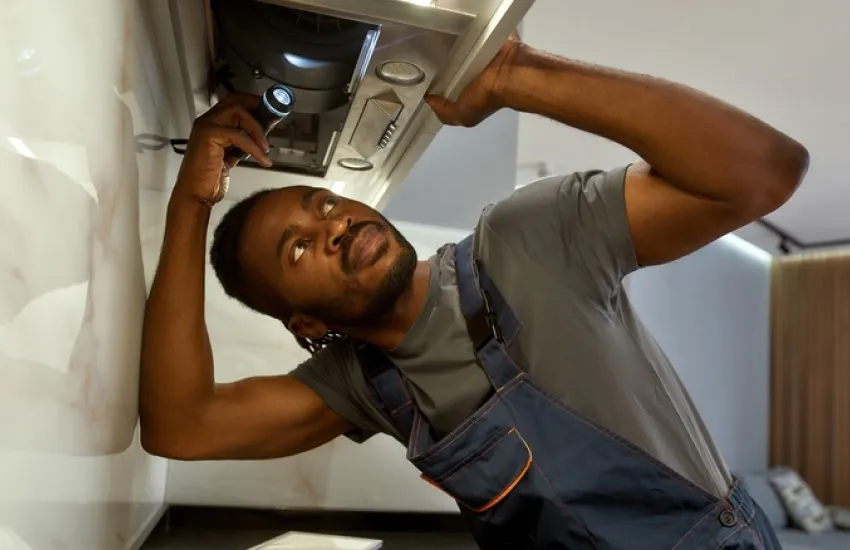
Dealing with a noisy range hood can disrupt your kitchen experience. By diagnosing the root causes whether clogged filters, loose components, or damaged parts, and following our step-by-step solutions, you can restore a quiet, efficient ventilation system. Regular maintenance and timely repairs will also help prevent future noise issues. If problems persist, professional assistance ensures a lasting fix.
How to Diagnose and Fix Noisy Range Hoods.
A noisy range hood can quickly become a major annoyance in the kitchen. Whether you’re dealing with a rattling sound, grinding, or humming, understanding the root causes can help you restore your kitchen’s tranquility. Range hoods serve an essential role in venting smoke, steam, and odors from your kitchen, but over time, mechanical issues can cause unnecessary noise. In this guide, we’ll walk you through how to diagnose and fix common noise-related issues with your range hood, as well as provide tips on maintaining a quieter kitchen.
Your fridge is a kitchen superstar as it keeps all your food fresh and drinks cold.
But does the fridge feel warm when you open it?
Is there water all over the floor?
Fridge issues are the worst!
Common Causes of Noisy Range Hoods
Before you dive into repairs, it’s crucial to understand what might be causing the noise. Here are the most common culprits:
- Clogged Air Filters: Dirty or clogged filters can restrict airflow, causing the fan to work harder and make more noise.
- Loose Parts: Over time, screws, bolts, and other components may loosen, causing vibrations and rattling noises.
- Damaged Fan Blades: Fan blades can crack, warp, or accumulate grease, leading to imbalance and noise.
- Worn-out Blower Motor: A motor with worn-out bearings can produce grinding or squealing sounds.
- Loose or Damaged Ductwork: Unsealed or loose ductwork can cause whistling or whooshing sounds when air is forced through
Step-by-Step Diagnosis
Diagnosing the source of the noise is the first step toward fixing it. Here’s how to locate the issue:
- Listen Closely: Turn on the range hood and listen carefully to where the noise seems to be coming from. Is it near the fan, motor, or ductwork?
- Inspect the Fan Area: Look for any visible debris or obstructions. Grease buildup or objects in the fan area can create imbalance.
- Check the Fan Blades: Look for any cracks, dents, or warping in the blades. Also, check if the fan spins freely.
- Examine the Motor: Listen for unusual sounds like grinding or squealing from the motor. This could indicate worn-out bearings.
- Inspect the Ductwork: Check for loose connections or damage in the ducts that could be contributing to the noise.
How to Fix Noisy Range Hoods
Once you’ve identified the source, follow these solutions to restore your range hood’s quiet operation:
Clean or Replace Air Filters
- Remove the filters: Follow the manufacturer’s instructions to remove the filters.
- Clean or replace: If your filters are washable, clean them with warm, soapy water. If they’re disposable, replace them with new filters.
- Dry filters thoroughly: Make sure the filters are completely dry before reinstalling them to prevent mold and further clogging.
Tighten Loose Components
- Turn off the power: Always unplug the range hood before working on it.
- Access internal components: Remove the cover or grille.
- Tighten screws and bolts: Check all screws, bolts, and mounts. Tighten any loose parts, particularly around the fan and motor areas.
Address Fan Blade Issues
- Inspect the fan blades: Look for any cracks, dents, or signs of wear.
- Clean the blades: Use a degreaser to clean off grease or food particles.
- Replace damaged blades: If the blades are warped or cracked, replace them with compatible parts.
Lubricate or Replace the Motor
- Lubricate the motor: If the motor makes squealing or grinding sounds, lubricate the bearings (if accessible) with motor oil.
- Replace the motor: For older models or if lubrication doesn’t work, you may need to replace the motor entirely.
Check and Repair Ductwork
- Inspect duct connections: Ensure that all ducts are securely connected. Look for loose clamps or joints.
- Seal leaks: Use duct tape or mastic sealant to seal any gaps.
- Replace damaged ducts: If ducts are cracked or severely damaged, replace them to prevent air leaks.
Adjust Fan Speed
- Test different fan speeds: If the noise occurs only at higher speeds, try adjusting the fan speed to a lower setting.
- Check for adjustable controls: Some range hoods have speed controls that can help reduce the noise at lower cooking intensities.
Preventive Measures
To avoid future noise issues, consider these preventive measures:
- Clean filters regularly: Clean or replace filters every 1–3 months, depending on usage.
- Wipe down the fan blades: Regularly clean the fan blades and interior surfaces to prevent grease buildup.
- Tighten screws every 6-12 months: Inspect and tighten screws and fasteners to avoid vibrations.
- Schedule professional maintenance: Have your range hood professionally cleaned and inspected once a year to ensure everything is functioning smoothly.
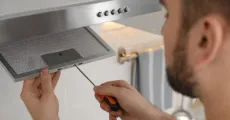
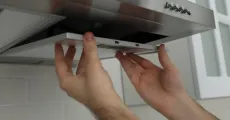
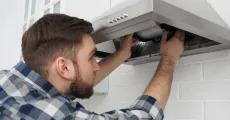
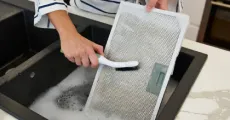
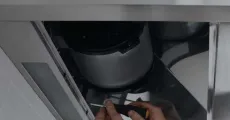
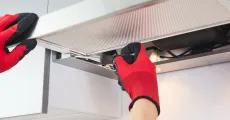
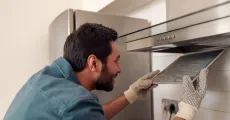
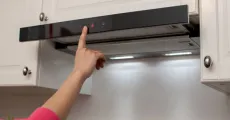
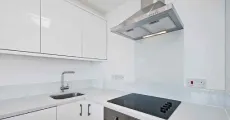
Final Call
If these troubleshooting steps don’t resolve the noise or if you’re uncomfortable performing repairs, it’s best to consult a professional. CLT Appliance Repair specializes in diagnosing and fixing range hood issues, including noise problems. Our expert technicians can identify underlying issues and provide effective range hood repair solutions to restore your range hood’s quiet operation.
Call CLT Appliance Repair today for a professional diagnosis and solution to your noisy range hood!
FAQs
Rattling noises are often caused by loose parts, such as screws or bolts, or by debris in the fan blades. Tightening the components and cleaning the fan should help.
Grinding sounds are often due to worn-out motor bearings. Lubricating the bearings or replacing the motor may be necessary.
Yes, clogged filters can restrict airflow, causing the fan to work harder and make more noise. Regularly cleaning or replacing filters can resolve this issue.
The fan blades may be damaged, unbalanced, or clogged with grease. Check for damage and clean or replace the blades as needed.
If the issue is related to loose components, clogged filters, or fan blades, you can likely fix it yourself. However, if the noise persists or is caused by motor failure or damaged ductwork, it’s best to contact a professional.
Don't let a malfunctioning Range Hood disrupt your daily life. Contact CLT Appliance Repair today at 704-606-9043 to schedule your Range Hood repair service.
We'll have your Range Hood back to optimal performance in no time!.

